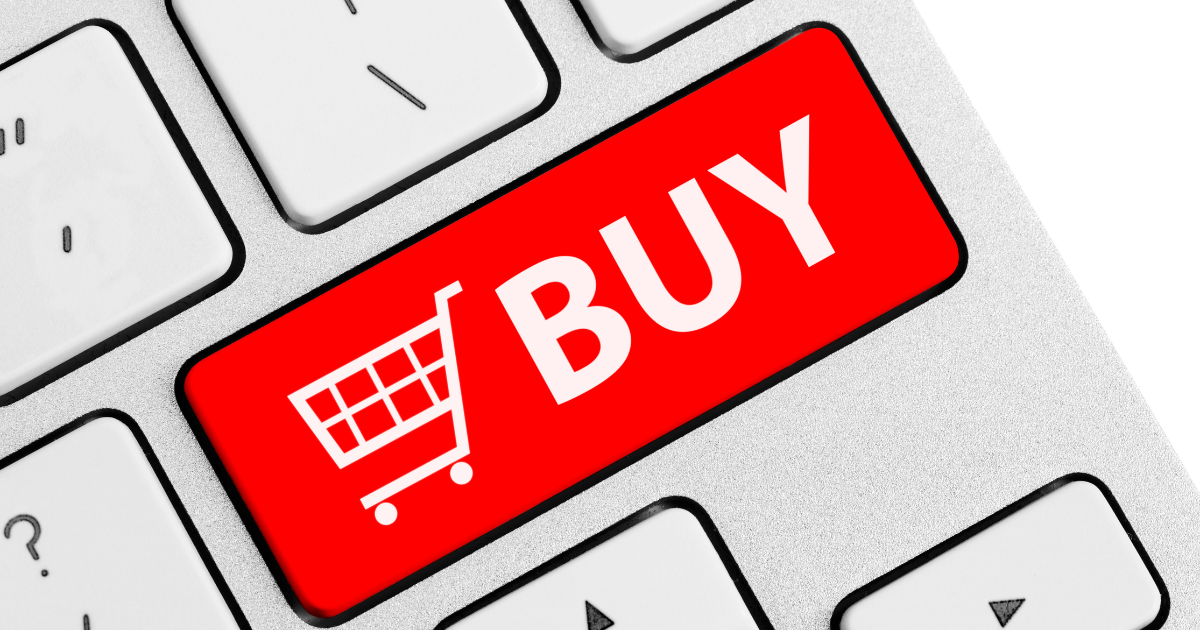Post Title
How to Analyze Buying Behavior to Improve Marketing Campaigns
April 22, 2025
Understanding how customers make purchasing decisions is key to winning in today’s competitive market. If you're not paying close attention to buying behavior, you're likely missing out on major opportunities to engage, convert, and retain customers. But here's the good news: with the right strategies and tools, analyzing buying behaviors can become your marketing secret weapon.
In this blog, we’re going to explore how to effectively analyze consumer buying behavior and how to apply those insights to build smarter, data-driven marketing campaigns that actually move the needle.
Let’s break it all down, step by step.
The Importance of Buying Behavior in Marketing

Buying behavior is the why behind every customer decision. It’s not just about who your customers are—it’s about what they do, how they respond to your brand, and what motivates them to take action. It reveals the patterns, preferences, and decision-making processes that lead someone from awareness to purchase.
So, why is buying behavior such a big deal in marketing?
Because when you truly understand it, you can:
- Tailor your messaging to resonate with specific audiences.
- Choose the right channels and timing for your outreach.
- Predict and influence future customer actions.
- Reduce wasted ad spend by focusing on what works.
Let’s face it—guessing your way through a campaign just doesn’t cut it anymore. Today’s consumers expect personalization and relevance, and buying behavior helps you deliver just that.
Think of it as your roadmap. Instead of throwing content into the void and hoping something sticks, you're making informed decisions backed by real data. Whether it's refining your email strategy, adjusting ad targeting, or improving website UX, everything becomes more effective when it’s rooted in behavior.
In short, marketing without understanding buyer behavior is like setting sail without a compass. You might move—but not in the direction that gets results.
Key Factors That Influence Consumer Purchasing Decisions
Let’s be clear—consumers don’t buy on impulse alone. Every purchasing decision is shaped by a combination of psychological, emotional, social, and financial influences. If you want to understand buying behavior, you have to look deeper into what actually drives the decision-making process.
Here are some of the biggest factors at play:
- Needs vs. Wants: Is your product solving a real problem or simply appealing to a desire?
- Perceived Value: Are customers seeing your offer as the best choice compared to competitors?
- Brand Trust: Do they feel secure doing business with you, or are they unsure?
- Peer Influence: Are online reviews, social proof, or recommendations swaying their opinions?
- Emotions: Is their decision sparked by excitement, fear of missing out, or a personal connection?
- Timing and Urgency: Are they responding to a limited-time offer, seasonal need, or upcoming event?
Each of these factors plays a role in how consumers evaluate their options. When you recognize what’s guiding their choices, you can shape your messaging, offers, and outreach accordingly.
Understanding these elements doesn’t just make your campaigns more effective—it makes your brand more relatable and trustworthy. You're not just selling a product; you’re addressing what matters most to your audience, exactly when it matters.
Segmenting Your Audience Based on Behavior Patterns

Let’s face it—not every customer engages with your brand the same way. That’s why treating your audience as one giant group doesn’t work anymore. Behavioral segmentation gives you a smarter approach. Instead of relying only on demographics, it focuses on how people act—which is often more revealing.
Here are some common behavior-based segments to keep in mind:
- Frequent Buyers: These loyal customers keep coming back. They trust you and are more likely to respond to loyalty rewards or early access offers.
- Window Shoppers: They browse, maybe even revisit pages, but never hit “buy.” Retargeting ads and reminders can help nudge them forward.
- Deal Seekers: These shoppers love a good bargain. They’re most active during sales, promotions, or with coupon codes.
- Abandoned Cart Users: They added items but didn’t finish the purchase. A timely follow-up or a limited-time incentive can bring them back.
- High-Engagement Users: They comment, share, and read your content—but haven’t converted yet. They’re showing interest and just need the right push.
By segmenting your audience this way, you’re not guessing—you’re responding to actual behaviors. That means you can personalize your campaigns to align with each group’s unique habits and motivations.
In short, behavioral segmentation helps you talk to people in a way that feels more relevant and less random. And when your marketing feels personal, it performs better.
Data Sources for Tracking and Analyzing Buying Behavior
You don’t need to guess what your customers are up to—there’s plenty of data out there to tell you. With the right tools, you can see how people engage with your brand at every stage of the journey. These insights help you understand what’s working, what’s not, and where to optimize your strategy.
Here are some valuable data sources to track buying behavior:
- Google Analytics: Great for monitoring site traffic, bounce rates, conversion paths, and where users drop off.
- CRM Systems: These reveal where a lead is in the sales funnel, their purchase history, and how they’ve interacted with your team.
- Email Marketing Tools: Help you track open rates, click-throughs, and engagement by segment, so you can refine your messaging.
- E-Commerce Platforms: Provide detailed data on product views, cart additions, purchases, and repeat customer behavior.
- Heatmaps and Screen Recordings: Let you see where users click, scroll, and spend time, offering a visual map of their experience.
When you combine these sources, you’re not just collecting data—you’re connecting the dots. You start to see patterns in behavior that explain why conversions happen (or don’t).
And the best part? With this kind of insight, your marketing moves from reactive to proactive. You’re not guessing—you’re making decisions based on real user actions.
Using Analytics Tools to Decode Buyer Intent

Not every visitor is ready to make a purchase, and that’s where understanding buyer intent comes in. It’s the difference between someone casually browsing and someone who’s primed to buy. By using the right analytics tools, you can spot those signals and tailor your marketing accordingly.
Here are a few tools that help decode intent:
- Google Search Console: See what keywords people use to find your site. Are they researching, comparing, or ready to take action? This gives you a glimpse into their mindset.
- Behavior Flow in GA4: Track how users move through your site. Are they exploring multiple pages or bouncing quickly? Their path tells a story.
- Conversion Funnels: Analyze where users are dropping off. Are they abandoning the cart or exiting at checkout? This helps you remove friction.
- Retargeting Data: Identify visitors who return after leaving. What pages are they revisiting? This indicates renewed interest and potential for conversion.
Buyer intent adds depth to your understanding of buying behavior. It’s not just about what users are doing—it’s about why they’re doing it.
When you can identify intent signals, you’re better equipped to respond with the right message, offer, or nudge at the right moment. Ultimately, it’s about guiding users from interest to action—and doing it with insight instead of guesswork.
Identifying Common Buyer Journeys Across Channels
Let’s be real—buyer journeys are rarely straightforward. A customer might discover you through an Instagram post, check out your website days later, download a free guide, and finally make a purchase weeks down the line after seeing an email reminder.
That’s why mapping out these journeys matters. It helps you:
- Understand which channels contribute to awareness, consideration, and conversion.
- Identify key touchpoints that move buyers closer to a decision.
- Spot friction points where people lose interest or exit before converting.
To break this down, try using a few key strategies:
- Attribution Modeling: This helps you understand which platforms (ads, social media, search, email) are influencing different parts of the journey.
- Customer Journey Maps: These outline each step, along with emotional triggers or motivations along the way.
- Cross-Device and Multi-Session Tracking: Since people often bounce between phones, laptops, and tablets, this ensures you’re seeing the full picture.
Tracking cross-channel behavior can feel messy, but it’s worth it. When you know where your audience starts, pauses, and finally takes action, you can build smarter, more connected campaigns.
Ultimately, understanding the buyer journey helps you stop thinking in silos. Your marketing becomes more holistic, and your messaging stays consistent, no matter where or when someone engages with your brand.
From Behavioral Insights to Actionable Marketing Tactics

Collecting data is only half the job—what really counts is what you do with it. Once you’ve analyzed buying behavior, it’s time to turn those insights into real marketing moves that actually drive results.
Here are some actionable tactics based on behavior:
- Abandoned Cart Emails: Automatically follow up with users who left items in their cart. A gentle reminder—or even a small incentive—can bring them back.
- Exit-Intent Popups: When someone’s about to leave your site, trigger a targeted offer or message to keep them engaged.
- Smart Retargeting Ads: Show users ads based on the products they viewed or the pages they visited. It’s a subtle nudge that keeps your brand top-of-mind.
- Behavior-Based Email Flows: Create automated sequences like welcome emails, win-back campaigns, or loyalty perks based on how users interact with your brand.
- Dynamic Product Recommendations: Personalize what each user sees by suggesting items based on their browsing or purchase history.
The goal here isn’t just to react—it’s to respond with relevance. Buying behavior shows you what your audience is interested in, where they hesitate, and what nudges them forward.
By aligning your tactics with actual behavior, you’re not guessing—you’re making intentional moves that meet people where they are in their journey. That’s where real marketing impact happens.
Personalizing Campaigns Based on Buyer Personas
Once you’ve gathered behavioral data, the next step is turning that insight into detailed buyer personas. These aren’t just made-up profiles—they’re shaped by how real people interact with your brand. When you base personas on actual buying behavior, your marketing becomes far more relevant and effective.
Here’s how behavior helps refine your personas:
- Content Preferences: Do they prefer reading in-depth blog posts or watching quick how-to videos? This tells you how to communicate best.
- Engagement Frequency: Are they active daily, or do they check in once a month? Frequency helps you set the right messaging cadence.
- Spending Habits: Are they browsing luxury products or sticking to value-based items? Understanding price sensitivity guides your offers.
- Decision-Making Speed: Some buyers move fast, while others need more nurturing and reassurance along the way.
Once you have this behavioral data in place, you can personalize everything—ads, email campaigns, landing pages, and product recommendations—based on how your personas actually behave.
The best part? You’re not just marketing to a general audience. You’re speaking directly to people who’ve shown you what they care about, how they buy, and what motivates them. It’s the difference between hoping for clicks and creating real engagement.
The Impact of Behavior-Driven Marketing Strategies

Launching behavior-driven campaigns is just the beginning—you also need to measure how well they’re working. Tracking the right metrics lets you see if your strategies are truly influencing buying decisions and improving performance.
Here are some key metrics to monitor:
- Conversion Rates by Behavior Segment: Are specific groups (like cart abandoners or frequent visitors) converting more after targeted efforts?
- Average Order Value Across Buyer Types: Are tailored campaigns encouraging higher spending?
- Engagement Rate by Channel and Message Type: Which platforms and messages are resonating most with each segment?
- Time to Purchase (Before and After Segmentation): Are customers buying faster once you personalize the journey?
- Repeat Purchase Rate Among Targeted Groups: Is behavior-based targeting encouraging brand loyalty?
If your campaigns are aligned with actual behavior, you should start seeing results like:
- Higher ROI from more focused and relevant marketing.
- Shorter sales cycles thanks to better-timed outreach.
- Improved retention by speaking directly to customer needs.
- Stronger personalization that makes your brand feel more human.
The goal isn’t just to collect data—it’s to turn it into measurable outcomes. When you track these performance indicators, you’ll know exactly where your efforts are paying off and where there’s room to fine-tune. Behavior-driven marketing isn’t just smarter—it’s more accountable, too.
Testing and Optimization Through Behavioral Feedback
Buyer behavior isn’t set in stone—it shifts with trends, seasons, and even moods. That’s why your marketing strategy can’t be a one-and-done deal. To stay relevant, you need to continuously test, optimize, and adapt based on how your audience responds.
Here’s how to keep improving through behavioral feedback:
- A/B Test Behavioral Triggers: Try different subject lines, offers, or messages to see what drives action.
- Experiment with Timing: Do your emails perform better in the morning or at night? Are weekend promotions more effective?
- Tweak CTAs and Design: Sometimes, a simple color change or button placement can impact conversions.
- Survey Customers: Don’t guess—ask. Find out why they chose to buy, or what stopped them from completing a purchase.
Optimization is all about staying in tune with your audience. Buying behavior offers ongoing clues about what’s working—and what needs refining.
Think of it as a cycle: watch, learn, apply, repeat. The more you embrace this loop, the more agile and responsive your campaigns become. That’s how you stay ahead—by letting real user behavior lead the way.
Buyer Analysis: Start Smarter Campaigns with Visio SEO!

Analyzing buying behavior isn’t some secret weapon reserved for big brands with big budgets. It’s accessible to anyone willing to listen, measure, and adapt.
With Visio SEO, you can turn buyer insights into targeted, data-driven marketing that speaks directly to what your audience wants.
Start small. Segment your list. Track user paths. Over time, you’ll refine your strategy into something that feels less like marketing and more like a conversation.
Ready to launch smarter campaigns? Book a free buyer analysis consultation with Visio SEO!












